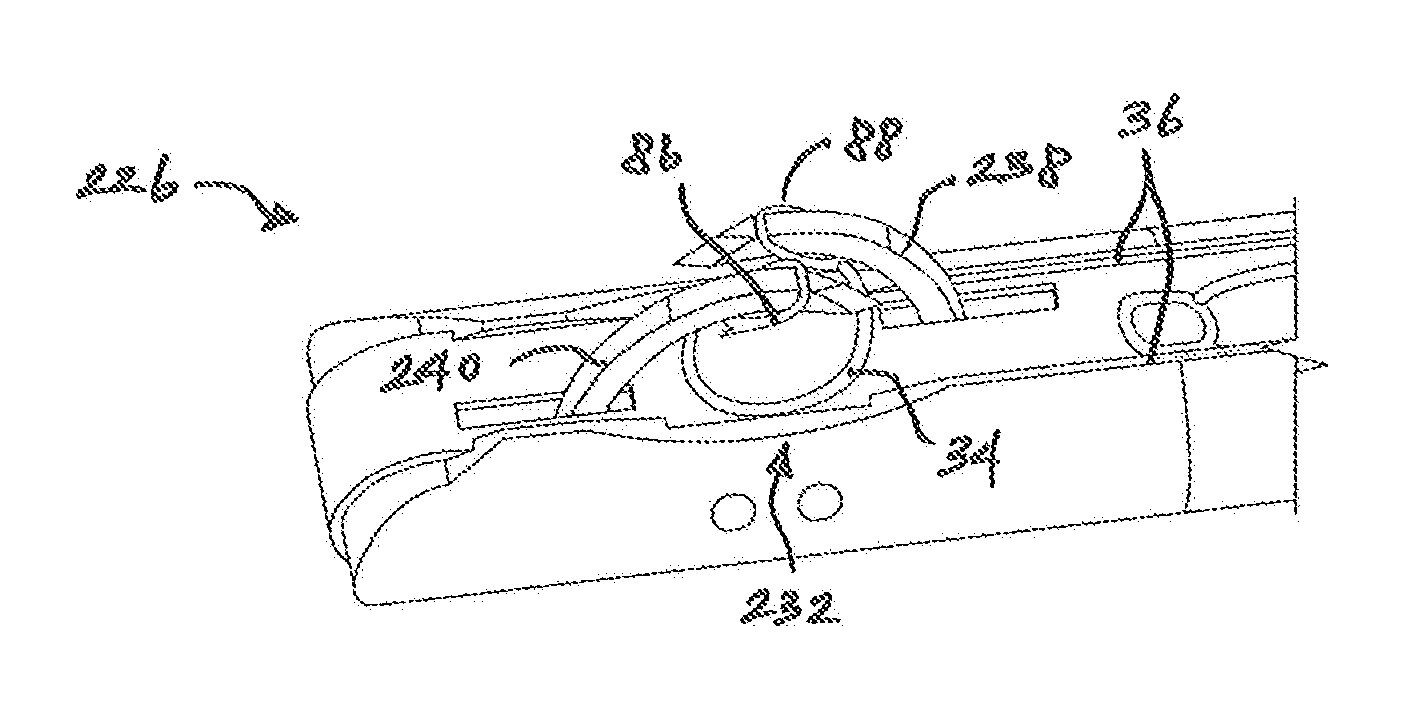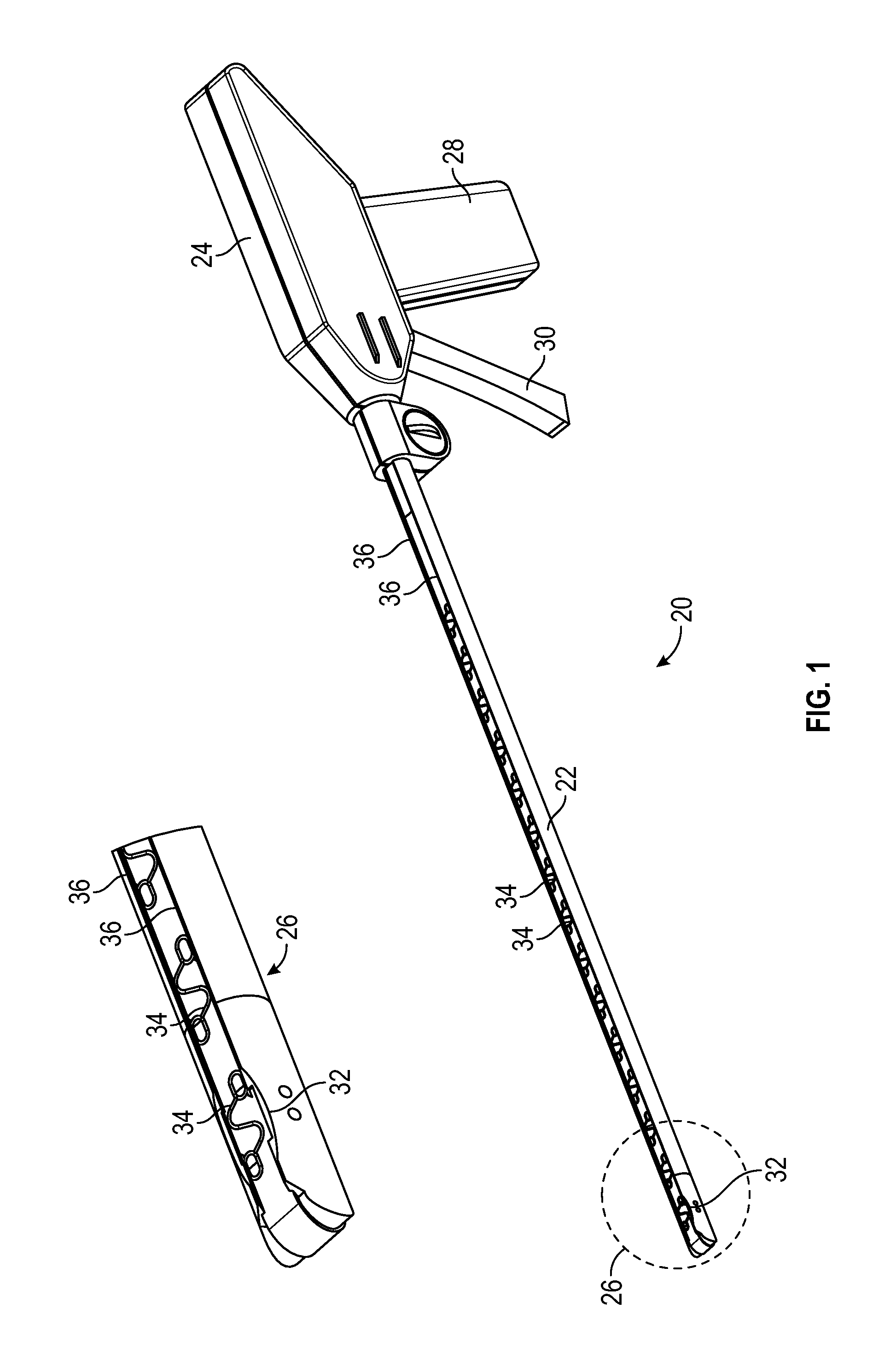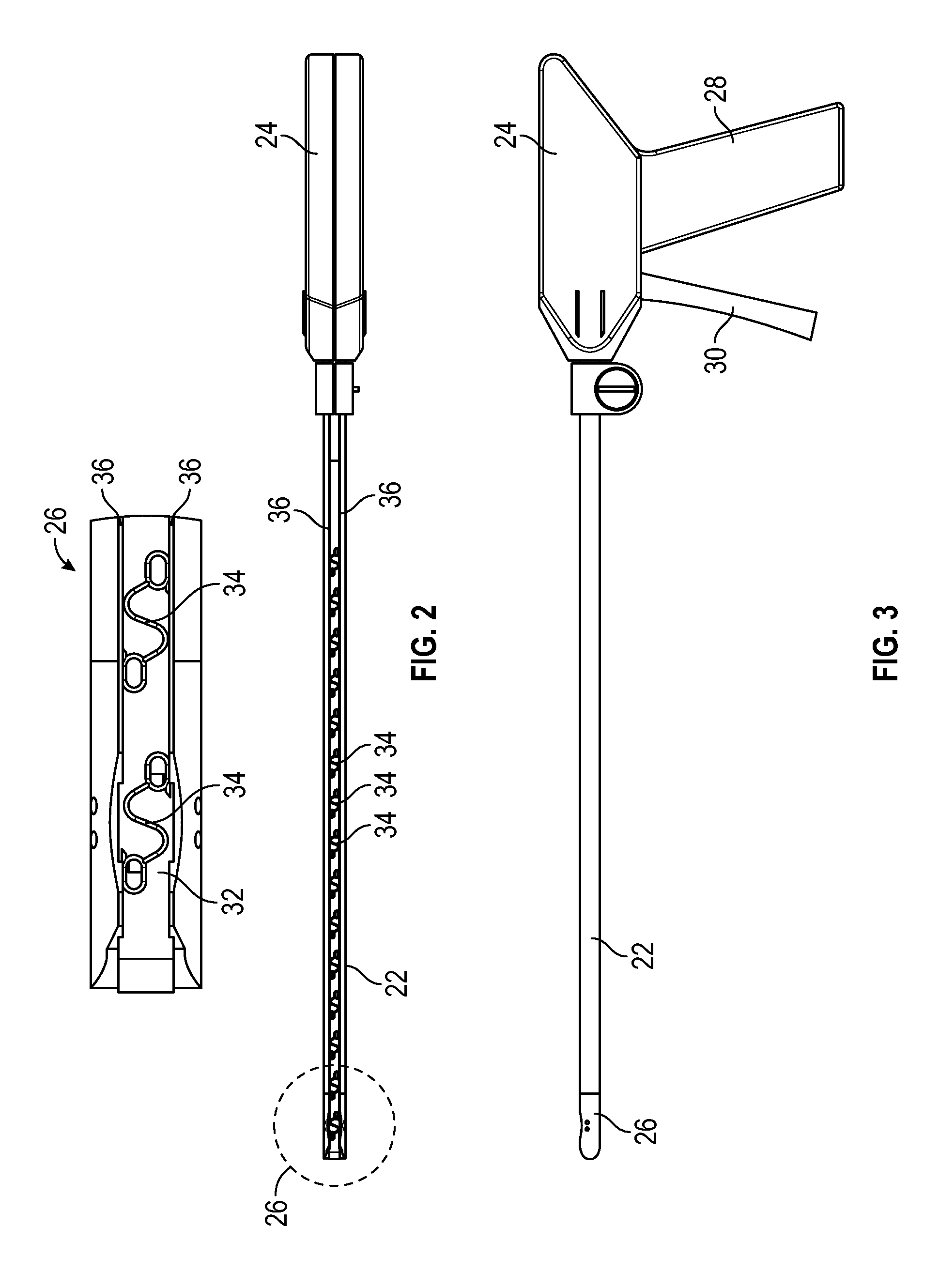Medical Fastening Device
a technology of medical devices and fastening rods, which is applied in the field of medical devices, can solve the problems of irritation or pain of patients, dislodged from the abdominal wall, and difficult or near impossible positioning of the end of the laparoscopic device squarely against the inner wall of the abdomen
- Summary
- Abstract
- Description
- Claims
- Application Information
AI Technical Summary
Benefits of technology
Problems solved by technology
Method used
Image
Examples
Embodiment Construction
[0040]Referring now to the drawings, and with specific reference to FIG. 1, a medical fastening device constructed in accordance with the teachings of the present disclosure is generally referred to by reference numeral 20. The medical fastening device 20, as will be described in further detail herein, may advantageously enable convenient yet effective means of providing fasteners within a surgical environment. The disclosed embodiments may additionally facilitate the installation of fasteners during minimally invasive surgical procedures, such as laparoscopic procedures, and the like. As used for laparoscopic treatment of a hernia, for example, the first embodiment of FIGS. 1-7 of the fastening device 20 may be placed under sections of tissue, within or around the abdominal region, to fasten tissues of the abdominal wall or to fasten prosthetic mesh to the abdominal wall from the inside. Although the embodiments disclosed herein demonstrate tissue fastening as applied to laparoscop...
PUM
 Login to View More
Login to View More Abstract
Description
Claims
Application Information
 Login to View More
Login to View More - R&D
- Intellectual Property
- Life Sciences
- Materials
- Tech Scout
- Unparalleled Data Quality
- Higher Quality Content
- 60% Fewer Hallucinations
Browse by: Latest US Patents, China's latest patents, Technical Efficacy Thesaurus, Application Domain, Technology Topic, Popular Technical Reports.
© 2025 PatSnap. All rights reserved.Legal|Privacy policy|Modern Slavery Act Transparency Statement|Sitemap|About US| Contact US: help@patsnap.com



